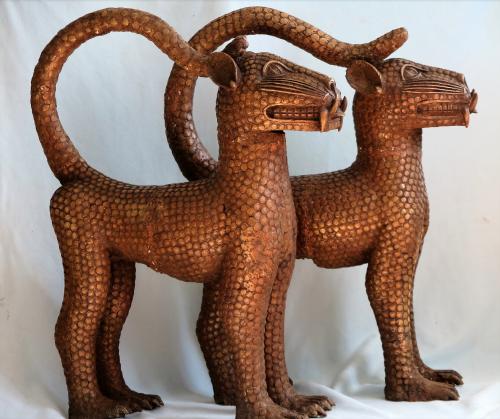Leopards may be more numerous than other big cats in Africa, they face a dizzying array of threats: rising human populations, habitat loss and retaliatory killings after the deaths of livestock, an increase in the illegal wildlife trade including to satisfy demand for leopard-bone wine in China, killing for the ceremonial use of skins, a rapid decline in the availability of prey partly caused by unsustainable levels of bushmeat poaching, and poorly managed trophy hunting.
The International Union for Conservation of Nature has downgraded leopards on its Red List of Threatened Species from Least Concern in 2002 to Near Threatened in 2008 to Vulnerable in 2016.
Leopard Stats
-30%
Leopards’ ranges have fallen by more than 30 percent in sub-Saharan Africa in a little over two decades, between 1993 to 2015.
> 50%
Populations in East and West Africa are thought to have fallen by more than 50 percent between 1970 and 2005, while numbers are also falling in southern Africa. Leopards are thought to have become extinct in Morocco and Algeria within the past decade and half.
4,500-7,000
The number of leopards thought to be killed annually just to meet demand for skins by followers of the Nazareth Babtist (Shembe) Church in South Africa.
59%
Leopard prey populations inside protected areas in sub-Saharan Africa fell by nearly 60 percent between 1970 and 2005 largely due to the commercialized bushmeat trade.
Key Facts
- Leopards can see seven times better in the dark than humans. As hunters they rely on stealth, camouflage, lightning-quick reflexes, fast running speeds and power to catch their prey.
- Leopards are superb climbers, often storing and eating their kills in trees to avoid other predators. Mothers will also sometimes cubs in trees to keep them safe.
- They are solitary, nocturnal animals, marking their territories with urine, scent and scratch marks.
- Leopards and jaguars with black coats are sometimes known as black panthers. They are in fact the same species, just with excessive dark melanin in the skin – the opposite of albinism.
- The jagged black spots on leopards are called rosettes, because they look like roses. The pattern is unique to each animal, but leopards in East Africa tends to have more circular spots, compared to squarer spots in Southern Africa. Cheetahs have round spots, while jaguars have black spots inside the rosettes.
Leopards in African culture
Across Africa, leopards (and lions) have long been associated with royalty, from the Ashanti of modern-day Ghana and the Dahomey kingdom of modern-day Benin who believed their kings were partly descended from leopards, to the Yoruba and Kongo kingdoms who strongly associated their royal families with the animal, and the Nuer of Sudan and Lele of the Congo region whose chiefs dressed in leopard skins.

Bronze leopards also appear in Ashanti art, while almost-life-size leopards made of bronze or ivory were among the most impressive of ancient Benin's creations. The Zulu people also revere the leopard, or ingwe, as a symbol of nobility and courage. Not surprisingly, common people in Africa were seldom allowed to keep leopards' skins or teeth, instead being asked to hand them over to the monarch. Even today, the demand for leopard skins remains a serious problem and cause of poaching,
There are many folktales of how the leopard got its spots. In one tale, pursued by a hunter, the leopard ate the roots of a magical plant that protected from the hunter's arrows. Every time an arrow struck, a dark mark appeared, but the leopard survived, his markings helping him blend in with the forest. In another legend, the leopard invited his friend Fire to his home, and was singed.


